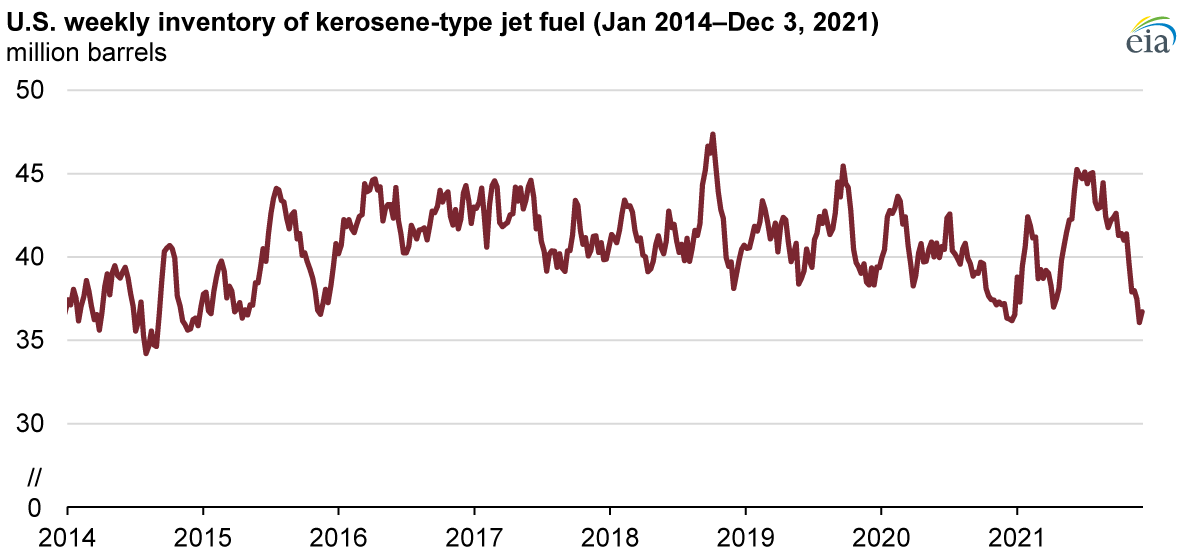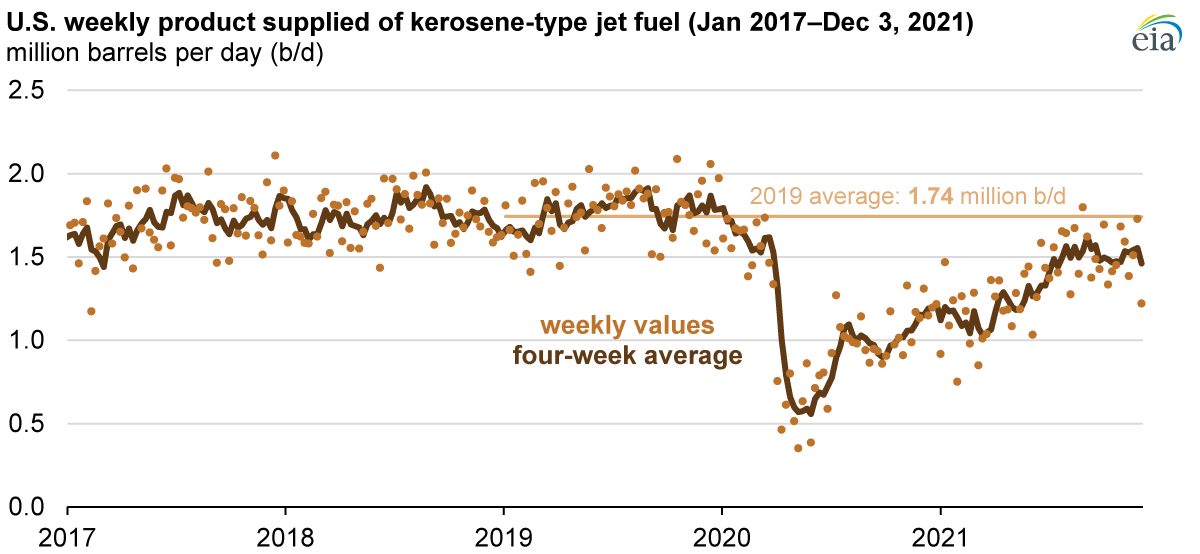Less production and more demand have reduced U.S. jet fuel inventories
Dec 13, 2021On November 26, U.S. jet fuel inventories were at their lowest level since late 2014, according to data in our Weekly Petroleum Status Report. Refineries produced less jet fuel in October compared with this summer, and since August, jet fuel demand has increased to near pre-pandemic levels. This increased demand, along with reduced production, has caused inventories to decline.

High jet fuel inventories in summer 2021 were the result of increased refinery production during a period of high market demand for gasoline and distillate. This high demand encouraged refiners to process more crude oil, and jet fuel is a byproduct of crude oil refining. Hurricanes along the Gulf Coast in August contributed to temporary refinery outages and reduced production, which brought jet fuel inventories to more normal seasonal levels. For the week ending September 3, total jet fuel inventory fell below its previous five-year average.
Jet fuel demand (measured as product supplied) has been well below its 2019 average of 1.74 million barrels per day (b/d) since the onset of the COVID-19 pandemic. In most weeks since mid-August, jet fuel consumption has been within 20% of 2019 levels, according to WPSR. By comparison, in November 2020, U.S. jet fuel demand averaged 1.13 million b/d, or about two-thirds of its 2019 average value.

Principal contributor: Kevin Hack
Similar Stories

Jet set to Mexico City: WestJet’s new non-stop Calgary route set to take off in summer 2025
View Article
TAM Group expands operations in Latin America with new office in Mexico
View ArticleEtihad reports December 2024 traffic stats
Etihad Airways, the national airline of the United Arab Emirates, has released its traffic statistics for December 2024, finishing the year with continued brisk performance.
View Article
Qatar Airways Cargo and Unilode announce a major digitalization partnership
View Article
Royal Air Maroc Cargo boosts efficiency and market share through CHAMP Cargosystems partnership
View Article
EFIS Maroc announces strategic partnership with China Eastern Airlines
View ArticleGet the most up-to-date trending news!
SubscribeIndustry updates and weekly newsletter direct to your inbox!





